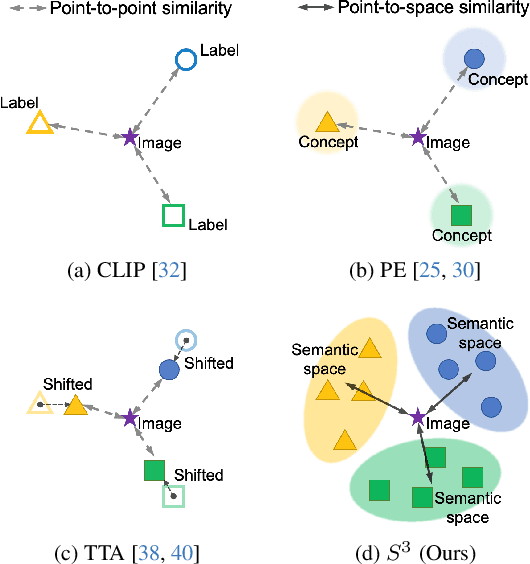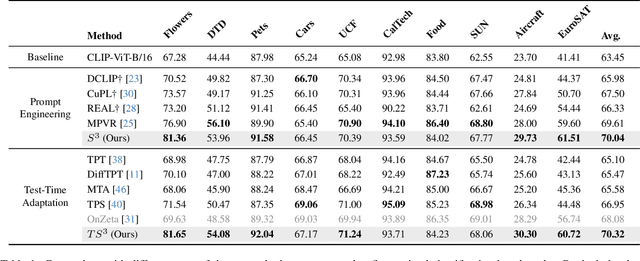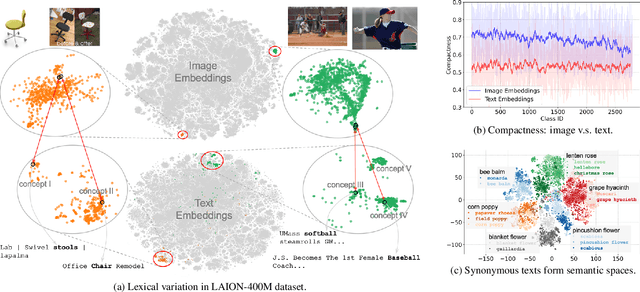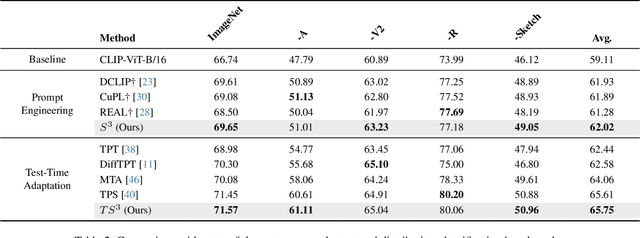Qilong Wang
RoomEditor++: A Parameter-Sharing Diffusion Architecture for High-Fidelity Furniture Synthesis
Dec 19, 2025Abstract:Virtual furniture synthesis, which seamlessly integrates reference objects into indoor scenes while maintaining geometric coherence and visual realism, holds substantial promise for home design and e-commerce applications. However, this field remains underexplored due to the scarcity of reproducible benchmarks and the limitations of existing image composition methods in achieving high-fidelity furniture synthesis while preserving background integrity. To overcome these challenges, we first present RoomBench++, a comprehensive and publicly available benchmark dataset tailored for this task. It consists of 112,851 training pairs and 1,832 testing pairs drawn from both real-world indoor videos and realistic home design renderings, thereby supporting robust training and evaluation under practical conditions. Then, we propose RoomEditor++, a versatile diffusion-based architecture featuring a parameter-sharing dual diffusion backbone, which is compatible with both U-Net and DiT architectures. This design unifies the feature extraction and inpainting processes for reference and background images. Our in-depth analysis reveals that the parameter-sharing mechanism enforces aligned feature representations, facilitating precise geometric transformations, texture preservation, and seamless integration. Extensive experiments validate that RoomEditor++ is superior over state-of-the-art approaches in terms of quantitative metrics, qualitative assessments, and human preference studies, while highlighting its strong generalization to unseen indoor scenes and general scenes without task-specific fine-tuning. The dataset and source code are available at \url{https://github.com/stonecutter-21/roomeditor}.
Constrained Prompt Enhancement for Improving Zero-Shot Generalization of Vision-Language Models
Aug 24, 2025Abstract:Vision-language models (VLMs) pre-trained on web-scale data exhibit promising zero-shot generalization but often suffer from semantic misalignment due to domain gaps between pre-training and downstream tasks. Existing approaches primarily focus on text prompting with class-specific descriptions and visual-text adaptation via aligning cropped image regions with textual descriptions. However, they still face the issues of incomplete textual prompts and noisy visual prompts. In this paper, we propose a novel constrained prompt enhancement (CPE) method to improve visual-textual alignment by constructing comprehensive textual prompts and compact visual prompts from the semantic perspective. Specifically, our approach consists of two key components: Topology-Guided Synonymous Semantic Generation (TGSSG) and Category-Agnostic Discriminative Region Selection (CADRS). Textually, to address the issue of incomplete semantic expression in textual prompts, our TGSSG first generates synonymous semantic set for each category via large language models, and constructs comprehensive textual prompts based on semantic ambiguity entropy and persistent homology analysis. Visually, to mitigate the irrelevant visual noise introduced by random cropping, our CADRS identifies discriminative regions with activation maps outputted by a pre-trained vision model, effectively filtering out noisy regions and generating compact visual prompts. Given the comprehensive set of textual prompts and compact set of visual prompts, we introduce two set-to-set matching strategies based on test-time adaptation (TTA) and optimal transport (OT) to achieve effective visual-textual alignment, and so improve zero-shot generalization of VLMs.
DALIP: Distribution Alignment-based Language-Image Pre-Training for Domain-Specific Data
Apr 02, 2025Abstract:Recently, Contrastive Language-Image Pre-training (CLIP) has shown promising performance in domain-specific data (e.g., biology), and has attracted increasing research attention. Existing works generally focus on collecting extensive domain-specific data and directly tuning the original CLIP models. Intuitively, such a paradigm takes no full consideration of the characteristics lying in domain-specific data (e.g., fine-grained nature of biological data) and so limits model capability, while mostly losing the original ability of CLIP in the general domain. In this paper, we propose a Distribution Alignment-based Language-Image Pre-Training (DALIP) method for biological data. Specifically, DALIP optimizes CLIP models by matching the similarity between feature distribution of image-text pairs instead of the original [cls] token, which can capture rich yet effective information inherent in image-text pairs as powerful representations, and so better cope with fine-grained nature of biological data. Particularly, our DALIP efficiently approximates feature distribution via its first- and second-order statistics, while presenting a Multi-head Brownian Distance Covariance (MBDC) module to acquire second-order statistics of token features efficiently. Furthermore, we collect a new dataset for plant domain (e.g., specific data in biological domain) comprising 10M plant data with 3M general-domain data (namely PlantMix-13M) according to data mixing laws. Extensive experiments show that DALIP clearly outperforms existing CLIP counterparts in biological domain, while well generalizing to remote sensing and medical imaging domains. Besides, our PlantMix-13M dataset further boosts performance of DALIP in plant domain, while preserving model ability in general domain.
CoE: Chain-of-Explanation via Automatic Visual Concept Circuit Description and Polysemanticity Quantification
Mar 19, 2025Abstract:Explainability is a critical factor influencing the wide deployment of deep vision models (DVMs). Concept-based post-hoc explanation methods can provide both global and local insights into model decisions. However, current methods in this field face challenges in that they are inflexible to automatically construct accurate and sufficient linguistic explanations for global concepts and local circuits. Particularly, the intrinsic polysemanticity in semantic Visual Concepts (VCs) impedes the interpretability of concepts and DVMs, which is underestimated severely. In this paper, we propose a Chain-of-Explanation (CoE) approach to address these issues. Specifically, CoE automates the decoding and description of VCs to construct global concept explanation datasets. Further, to alleviate the effect of polysemanticity on model explainability, we design a concept polysemanticity disentanglement and filtering mechanism to distinguish the most contextually relevant concept atoms. Besides, a Concept Polysemanticity Entropy (CPE), as a measure of model interpretability, is formulated to quantify the degree of concept uncertainty. The modeling of deterministic concepts is upgraded to uncertain concept atom distributions. Finally, CoE automatically enables linguistic local explanations of the decision-making process of DVMs by tracing the concept circuit. GPT-4o and human-based experiments demonstrate the effectiveness of CPE and the superiority of CoE, achieving an average absolute improvement of 36% in terms of explainability scores.
Unprejudiced Training Auxiliary Tasks Makes Primary Better: A Multi-Task Learning Perspective
Dec 27, 2024Abstract:Human beings can leverage knowledge from relative tasks to improve learning on a primary task. Similarly, multi-task learning methods suggest using auxiliary tasks to enhance a neural network's performance on a specific primary task. However, previous methods often select auxiliary tasks carefully but treat them as secondary during training. The weights assigned to auxiliary losses are typically smaller than the primary loss weight, leading to insufficient training on auxiliary tasks and ultimately failing to support the main task effectively. To address this issue, we propose an uncertainty-based impartial learning method that ensures balanced training across all tasks. Additionally, we consider both gradients and uncertainty information during backpropagation to further improve performance on the primary task. Extensive experiments show that our method achieves performance comparable to or better than state-of-the-art approaches. Moreover, our weighting strategy is effective and robust in enhancing the performance of the primary task regardless the noise auxiliary tasks' pseudo labels.
Generative Inbetweening through Frame-wise Conditions-Driven Video Generation
Dec 16, 2024



Abstract:Generative inbetweening aims to generate intermediate frame sequences by utilizing two key frames as input. Although remarkable progress has been made in video generation models, generative inbetweening still faces challenges in maintaining temporal stability due to the ambiguous interpolation path between two key frames. This issue becomes particularly severe when there is a large motion gap between input frames. In this paper, we propose a straightforward yet highly effective Frame-wise Conditions-driven Video Generation (FCVG) method that significantly enhances the temporal stability of interpolated video frames. Specifically, our FCVG provides an explicit condition for each frame, making it much easier to identify the interpolation path between two input frames and thus ensuring temporally stable production of visually plausible video frames. To achieve this, we suggest extracting matched lines from two input frames that can then be easily interpolated frame by frame, serving as frame-wise conditions seamlessly integrated into existing video generation models. In extensive evaluations covering diverse scenarios such as natural landscapes, complex human poses, camera movements and animations, existing methods often exhibit incoherent transitions across frames. In contrast, our FCVG demonstrates the capability to generate temporally stable videos using both linear and non-linear interpolation curves. Our project page and code are available at \url{https://fcvg-inbetween.github.io/}.
$S^3$: Synonymous Semantic Space for Improving Zero-Shot Generalization of Vision-Language Models
Dec 06, 2024



Abstract:Recently, many studies have been conducted to enhance the zero-shot generalization ability of vision-language models (e.g., CLIP) by addressing the semantic misalignment between image and text embeddings in downstream tasks. Although many efforts have been made, existing methods barely consider the fact that a class of images can be described by notably different textual concepts due to well-known lexical variation in natural language processing, which heavily affects the zero-shot generalization of CLIP. Therefore, this paper proposes a \textbf{S}ynonymous \textbf{S}emantic \textbf{S}pace ($S^3$) for each image class, rather than relying on a single textual concept, achieving more stable semantic alignment and improving the zero-shot generalization of CLIP. Specifically, our $S^3$ method first generates several synonymous concepts based on the label of each class by using large language models, and constructs a continuous yet compact synonymous semantic space based on the Vietoris-Rips complex of the generated synonymous concepts. Furthermore, we explore the effect of several point-to-space metrics on our $S^3$, while presenting a point-to-local-center metric to compute similarity between image embeddings and the synonymous semantic space of each class, accomplishing effective zero-shot predictions. Extensive experiments are conducted across 17 benchmarks, including fine-grained zero-shot classification, natural distribution zero-shot classification, and open-vocabulary segmentation, and the results show that our $S^3$ outperforms state-of-the-art methods.
TAMT: Temporal-Aware Model Tuning for Cross-Domain Few-Shot Action Recognition
Nov 28, 2024



Abstract:Going beyond few-shot action recognition (FSAR), cross-domain FSAR (CDFSAR) has attracted recent research interests by solving the domain gap lying in source-to-target transfer learning. Existing CDFSAR methods mainly focus on joint training of source and target data to mitigate the side effect of domain gap. However, such kind of methods suffer from two limitations: First, pair-wise joint training requires retraining deep models in case of one source data and multiple target ones, which incurs heavy computation cost, especially for large source and small target data. Second, pre-trained models after joint training are adopted to target domain in a straightforward manner, hardly taking full potential of pre-trained models and then limiting recognition performance. To overcome above limitations, this paper proposes a simple yet effective baseline, namely Temporal-Aware Model Tuning (TAMT) for CDFSAR. Specifically, our TAMT involves a decoupled paradigm by performing pre-training on source data and fine-tuning target data, which avoids retraining for multiple target data with single source. To effectively and efficiently explore the potential of pre-trained models in transferring to target domain, our TAMT proposes a Hierarchical Temporal Tuning Network (HTTN), whose core involves local temporal-aware adapters (TAA) and a global temporal-aware moment tuning (GTMT). Particularly, TAA learns few parameters to recalibrate the intermediate features of frozen pre-trained models, enabling efficient adaptation to target domains. Furthermore, GTMT helps to generate powerful video representations, improving match performance on the target domain. Experiments on several widely used video benchmarks show our TAMT outperforms the recently proposed counterparts by 13%$\sim$31%, achieving new state-of-the-art CDFSAR results.
Efficient Masked AutoEncoder for Video Object Counting and A Large-Scale Benchmark
Nov 20, 2024



Abstract:The dynamic imbalance of the fore-background is a major challenge in video object counting, which is usually caused by the sparsity of foreground objects. This often leads to severe under- and over-prediction problems and has been less studied in existing works. To tackle this issue in video object counting, we propose a density-embedded Efficient Masked Autoencoder Counting (E-MAC) framework in this paper. To effectively capture the dynamic variations across frames, we utilize an optical flow-based temporal collaborative fusion that aligns features to derive multi-frame density residuals. The counting accuracy of the current frame is boosted by harnessing the information from adjacent frames. More importantly, to empower the representation ability of dynamic foreground objects for intra-frame, we first take the density map as an auxiliary modality to perform $\mathtt{D}$ensity-$\mathtt{E}$mbedded $\mathtt{M}$asked m$\mathtt{O}$deling ($\mathtt{DEMO}$) for multimodal self-representation learning to regress density map. However, as $\mathtt{DEMO}$ contributes effective cross-modal regression guidance, it also brings in redundant background information and hard to focus on foreground regions. To handle this dilemma, we further propose an efficient spatial adaptive masking derived from density maps to boost efficiency. In addition, considering most existing datasets are limited to human-centric scenarios, we first propose a large video bird counting dataset $\textit{DroneBird}$, in natural scenarios for migratory bird protection. Extensive experiments on three crowd datasets and our $\textit{DroneBird}$ validate our superiority against the counterparts.
Conditional Controllable Image Fusion
Nov 03, 2024Abstract:Image fusion aims to integrate complementary information from multiple input images acquired through various sources to synthesize a new fused image. Existing methods usually employ distinct constraint designs tailored to specific scenes, forming fixed fusion paradigms. However, this data-driven fusion approach is challenging to deploy in varying scenarios, especially in rapidly changing environments. To address this issue, we propose a conditional controllable fusion (CCF) framework for general image fusion tasks without specific training. Due to the dynamic differences of different samples, our CCF employs specific fusion constraints for each individual in practice. Given the powerful generative capabilities of the denoising diffusion model, we first inject the specific constraints into the pre-trained DDPM as adaptive fusion conditions. The appropriate conditions are dynamically selected to ensure the fusion process remains responsive to the specific requirements in each reverse diffusion stage. Thus, CCF enables conditionally calibrating the fused images step by step. Extensive experiments validate our effectiveness in general fusion tasks across diverse scenarios against the competing methods without additional training.
 Add to Chrome
Add to Chrome Add to Firefox
Add to Firefox Add to Edge
Add to Edge